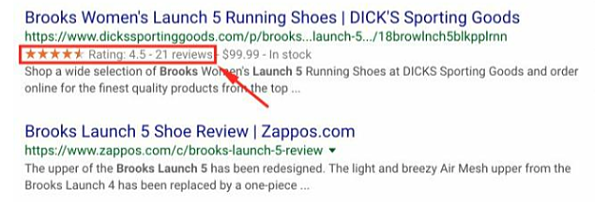Search Engine Optimization (SEO) is used by thousands of ecommerce websites around the world, with many of them selling similar products and services. However, you'll always find 1 website ranking higher in search engine results than the others. If your competition ranks higher than you, try to find out what they're doing that you are not.
There are several factors that influence rank preferences by search engines. Nobody knows exactly what these factors are, not even SEO experts. Thus, you can only try to adopt SEO best practices. With this in mind, we have listed 5 of the more common SEO mistakes below. By avoiding these 5 errors, you'll likely increase your chances of ranking higher in search engine results.
Here are 5 common SEO mistakes made by ecommerce websites:
- Slow website pages
- Low-quality content
- Duplicate content
- Poor mobile-friendliness
- Zero product reviews
Slow website pages
Here's a quick question for you: How much time does it take for the average page on your website to load?
If you don’t know, you are probably already making this SEO mistake.
In research done by dynatrace.com, more than 50% of people using the Internet expect web pages to load within 2 seconds. This means that when a website takes more than 2 seconds to load, a user is already considering hitting the back button. You’re probably thinking, these users are just too demanding!
Well, you should probably start making adjustments to meet the users' demands. In a 2010 official blog post, Google stated its intention to use page speed as an important ranking factor. So, don’t be surprised if you get outranked by a website with lower authority than yours.
The first thing you need to do to address this issue is to use a website like GTMatrix.com to check the speed of your website.
There are many reasons why your website could be slow, including these 3:
- Large images
There are many reasons for using images on your web pages. Aside from the obvious reason that they make your web pages look beautiful, they're a great way to break content, especially in blog posts. It would be overkill though if you used large-sized images on your web pages. Using large images won’t just hurt your website speed, it will also eat up bandwidth. So, take down that 2000 pixel image on your website and use any image editor of your choice to resize it to between 600 and 800 pixel.
- Redirect chains
Using redirects is a great way to enhance your visitors’ experience. By using them, you can avoid users getting a “404 Not Found” error when they're looking for a piece of content. However, when you redirect to 1 URL and then redirect to another which redirects to another, you’ll annoy users with slow loading pages.
- ecommerce platform
There are many ecommerce platforms, with WordPress and Shopify arguably being the most popular. All ecommerce platforms have at least an area where 1 thrives over another. However, 1 attribute that a good ecommerce platform must have is fast load time. So, when choosing an ecommerce platform, make sure it supports fast website loading.
Low-quality content
This is definitely 1 of the more common SEO mistakes that many new online store owners make. In an attempt to make money as quickly as possible, they make 1 or, in really terrible cases, all of these content blunders:
- Copy or spin product descriptions from other ecommerce websites
- Ignore product category pages, adding no description
- Use poorly optimized titles for products on their stores
- Don’t optimize their meta descriptions to improve their click-through rate in search engine results
These are only a few of the possible mistakes you could make on your ecommerce store. Your content matters not only to search engines but also to users. If you have poorly written content on your store, people might not engage with your store or buy from you. If nobody engages with your store, your traffic will plummet.
Creating original, search engine optimized content should be 1 of your top priorities. Avoid copying content, and create content that will motivate visitors to engage with your store.
Duplicate content
This is quite a common SEO mistake among many ecommerce websites. Duplicate content is when you have different URLs with the same content on your website. This happens a lot with product variations. Let’s assume you have a product on your store that has several color variations. If you have different links pointing to each of these different colors, your store will be marked as having duplicate content by search engines.
This might not affect your entire website SEO, however, it does have other implications. What a search engine like Google would do in this scenario is to index only 1 of these links and de-index the rest. You might be fortunate enough to have the link you want be selected for indexing, but sometimes you might not be so lucky.
To avoid this, select a single page that you want Google to rank and make it your canonical URL. This way Google will know exactly which page you want to rank in search engine results.
Need extra “dough” for the holidays? Did you know that Keap has a referral program? Check out how you can fatten your wallet before the holidays. https://t.co/REox8XZjyB pic.twitter.com/htAc5ejb3O
— Keap (@KeapGrowing) November 20, 2019
Poor mobile-friendliness
Traffic generated from mobile devices has increased each year. In 2018, 52.2% of worldwide website traffic was generated from mobile devices. This means if your website wasn’t optimized for mobile devices in 2018, you had either very little or no mobile traffic from top search engines.
Google favors mobile-friendly websites in search engine results. If your ecommerce website isn’t optimized for mobile devices, there’s very little chance your website will rank higher than your competition that does.
Characteristics of a mobile-friendly website include responsiveness and page speed. Responsiveness involves the ability for content on your website to be structured properly no matter the screen size on which it's displayed. Users can usually navigate a website easily when using a desktop computer. If your website isn’t responsive though, navigating becomes a problem on smaller devices.
We mentioned optimizing large images in the “slow website pages” section. It’s even more critical for mobile friendliness. You don’t want your mobile users waiting forever for a page to load by serving them high-resolution images they don’t need.
You can use the Google mobile-friendly test to test how mobile-friendly your website is.
Zero product reviews
Product reviews don’t just help your potential customers have an idea of the quality of a product, they also help search engines know how much your customers love your product. Since Google is user-focused, it's only logical that it will rank online stores with good product reviews higher in search engine results.
In fact, Google loves products reviews so much, it shows it in search results.

A very easy and inexpensive way to get product reviews on your store is by sending emails to your customers asking them to review the product.
Final thought
There are many factors that affect the ranking in search engine results. Avoiding the 5 mistakes detailed above will help make your online store a success.


